Przy czym te 400 kg może okazać się niewystarczające do planowanego w procesie manewrów korekcyjnych zwiększenia planowanej prędkości do 520 m/s przy użyciu silników , aby okazało się możliwe efektywne zbliżenie do Ziemi w dniu 22.09.2017.
DSM-1 zużył 364 kg materiałów na zwiększenie prędkość sondy o 431m/s
Więc jeszcze o 89 m/s powinna wzrosnąć prędkość sondy przy wykonywaniu subtelniejszych korekt.
Manewr TCM (Trajectory Correction Maneuver) z 18 stycznia 2017 pochłonął pewną ilość paliwa, zwiększając odpowiednio prędkość. Wkrótce powinny być podane szczegóły tego manewru.
Po dotarciu do Bennu silniki główne wyhamują prędkość OSIRIS-REx o 530 m/s.
Przy opuszczaniu planetoidy jest potrzebne zwiększenie prędkości o 328 m/s plus potem niewielkie korekty trajektorii.
A po oddzieleniu się od sondy zasobnika z próbkami w czasie przelotu w pobliżu Ziemi OSIRIS-REx powinien dysponować jeszcze zapasami paliwa. Tradycyjnie misja powinna nabrać nowego impulsu do realizacji kolejnego zadania.
(...)To line up the Earth Flyby, OSIRIS-REx completes a series of Deep Space Maneuvers starting in January 2017.
These maneuvers use the spacecraft’s four MR-107 main engines, each generating 200 Newtons of thrust, for a total change in velocity of 520 meters per second. Prior to the Deep Space Maneuvers, the spacecraft will prime its propulsion system by opening pyrovalves within the pressurization system to allow Helium into the propellant tank to maintain a constant pressure during the main engine burns. (...)
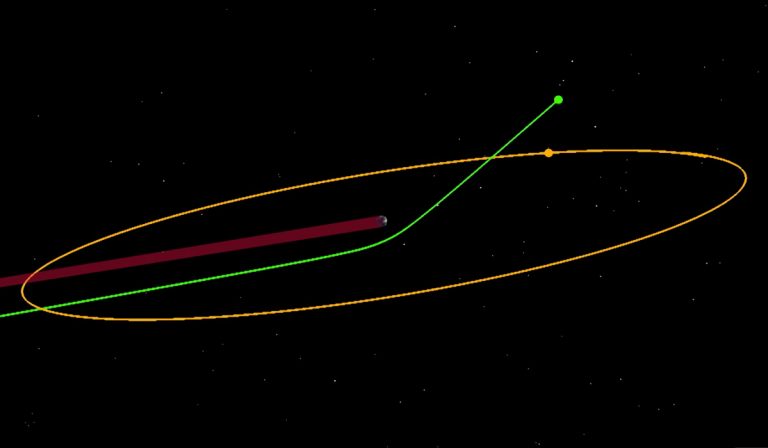 Earth Gravity Assist Trajectory – Image: University of Arizona
Earth Gravity Assist Trajectory – Image: University of Arizona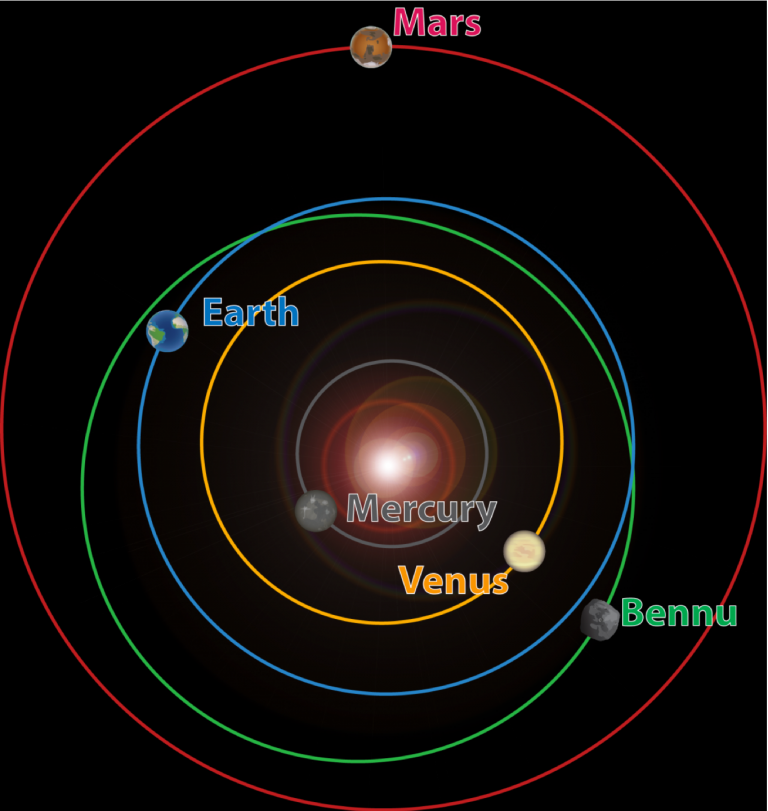 Orbit of Asteroid Bennu – Image: OSIRIS-REx Project / Dante LaurettaThe Earth Flyby has the purpose of increasing the spacecraft’s heliocentric velocity and modify the orbital inclination to six degrees in order to match that of asteroid Bennu. The Earth Flyby targets an altitude of around 20,000 Kilometers and has plenty margin to perform hazard avoidance maneuvers, but generally a higher flyby altitude is preferred over a lower pass. In case of a higher flyby, residual dV would have to be provided by the spacecraft.
Orbit of Asteroid Bennu – Image: OSIRIS-REx Project / Dante LaurettaThe Earth Flyby has the purpose of increasing the spacecraft’s heliocentric velocity and modify the orbital inclination to six degrees in order to match that of asteroid Bennu. The Earth Flyby targets an altitude of around 20,000 Kilometers and has plenty margin to perform hazard avoidance maneuvers, but generally a higher flyby altitude is preferred over a lower pass. In case of a higher flyby, residual dV would have to be provided by the spacecraft.
(...)
Major rendezvous burns will slow the spacecraft by 530 meters per second to achieve an approach speed of only 0.2 meters per second.(...)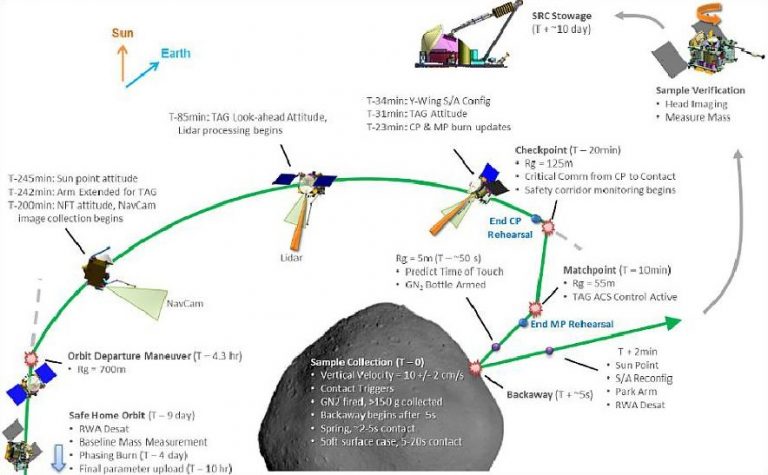
(...)If sticking to the planned Asteroid Departure, OSIRIS-REx would have to perform a 328-meter per second departure burn using its four main engines, placing the spacecraft on a return trajectory.
Asteroid Departure Maneuver places OSIRIS-REx onto a ballistic return cruise to Earth with no large maneuvers needed along the way. As a safety feature, the trajectory is set up to safely pass Earth if, for any reason, communications from the spacecraft are lost.
Tracking is performed and Trajectory Corrections are executed as necessary to precisely target the entry corridor. (...)

Return Trajectory Setup – Image: NASA / Lockheed Martin
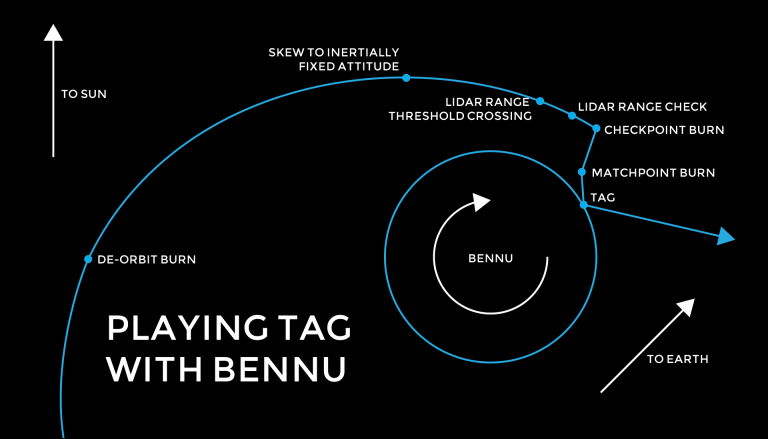
 Mission Timeline – Image: OSIRIS-REx Project
Mission Timeline – Image: OSIRIS-REx Project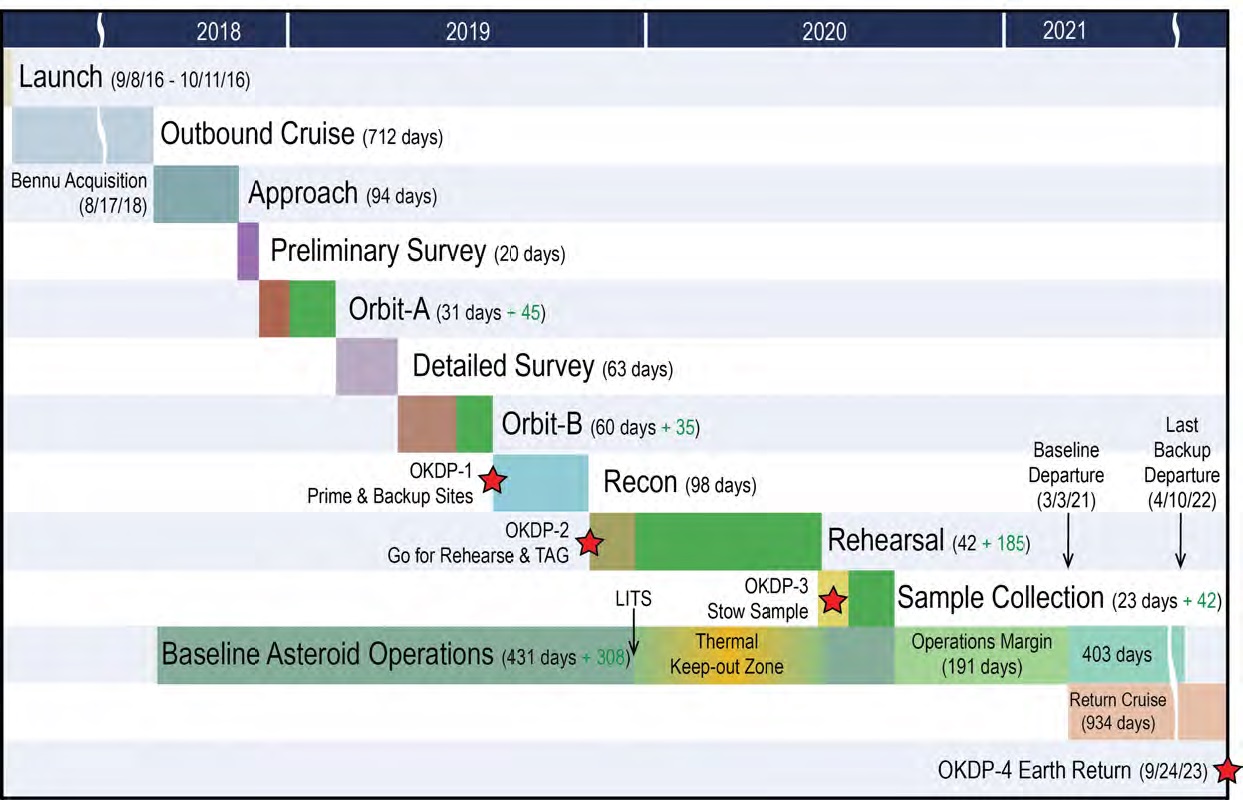 Mission Design with built-in margins – Image: OSIRIS-REx Projecthttp://spaceflight101.com/osiris-rex/osiris-rex-mission-profile/
Mission Design with built-in margins – Image: OSIRIS-REx Projecthttp://spaceflight101.com/osiris-rex/osiris-rex-mission-profile/